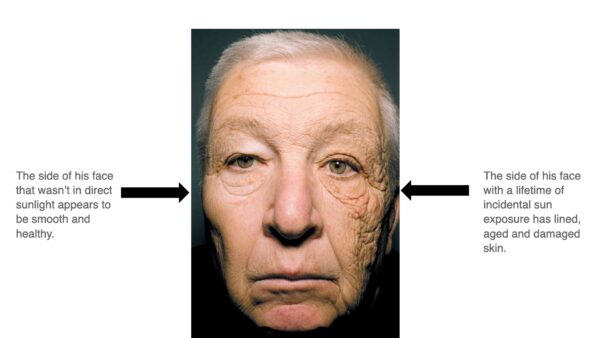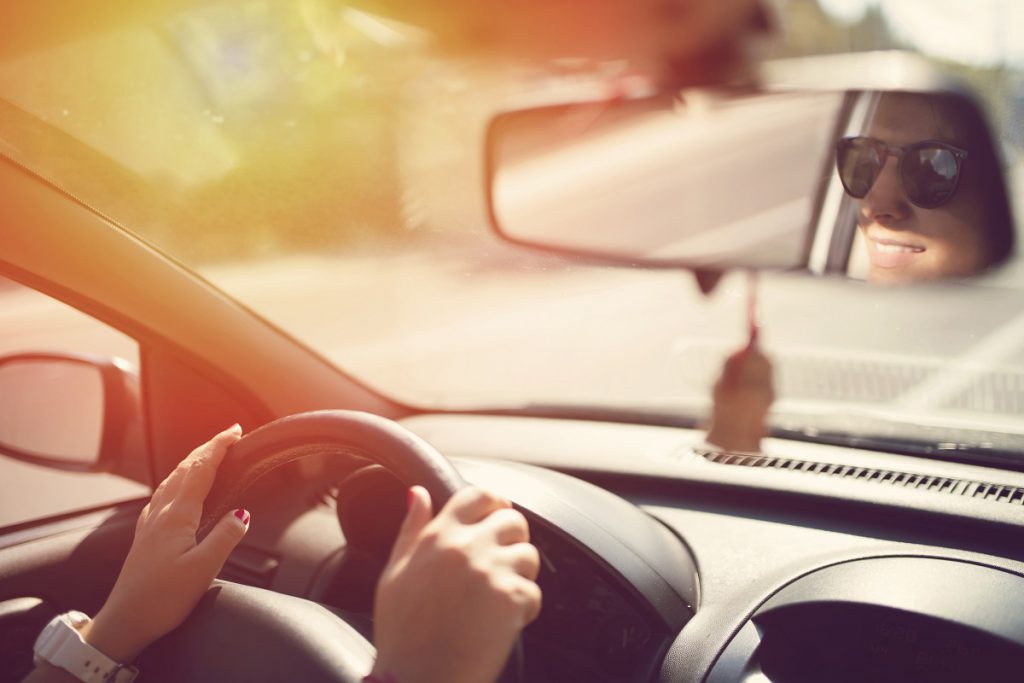UV Window Film & Tint
Indoor Sun Protection for Your Skin
It’s a fact: Not all ultraviolet (UV) radiation from the sun stays outdoors. You may think that windows prevent the sun from harming your skin, but the truth is that UVA rays can pass through window glass and reach you indoors, at home and on the road, putting you at risk for premature aging and skin cancer.
What this means: If you regularly sit near a window or go for long drives on sunny days, this risk is especially high: those UVA rays are hitting your skin and doing damage.
What you can do: Fortunately, you can shield your skin from sun damage that can lead to skin cancer without forgoing natural light, by installing UV window film in your home and car as part of a complete sun protection strategy.
UV Window Film Blocks
99%
of UV Rays
![]()
UV rays & your skin
There are two types of UV radiation: UVB rays, which mainly cause sunburn, and UVA rays, which mainly cause tanning and skin aging but can also lead to sunburn. Both types of UV rays increase your risk for skin cancer.
Window glass does a good job at filtering out most UVB rays. However, UVA rays are longer wavelengths that pass through windows and clouds year-round. And while slightly less intense than UVB, UVA rays penetrate your skin more deeply. Exposure to UVA causes genetic damage to cells on the innermost part of your top layer of skin, where most skin cancers occur.
Indoor sun damage is real
Many people don’t realize that sun exposure and skin damage can happen while indoors. But when you consider how sunlight can fade home furnishings and flooring over time, it’s easier to understand how the sunlight that hits you inside your home or car can also harm your skin.
This type of exposure is known as incidental sun exposure. It’s dangerous because of the way it adds up over time, and compounds your overall sun damage and increases skin cancer risk.
A paper published in the New England Journal of Medicine highlights the case of a 69-year-old man who drove a delivery truck for 28 years. The skin on the left side of his face is wrinkled, aged and damaged from hours spent by the driver’s side window. The skin on the right side of his face, away from the window, appears smoother and healthier.
In the U.S., melanoma and nonmelanoma skin cancers are more common on the left side, since drivers are most directly exposed to the sun through a window on their left side.

How UV window film protects your skin
UV window film is an effective, often underused sun protection solution. Also known as solar window film or UV window tint, UV window film is a thin polyester film with UV light inhibitors added during the manufacturing process. Window films come in many styles, including clear/translucent, to allow natural light to come through, along with tinted varieties.
When UV window film is applied to the windows of vehicles, homes or offices, it can block more than 99% of UVA and UVB light.
- In vehicles: Window glass blocks most UVB rays, but not UVA. The front windshields of cars are laminated glass, treated to shield drivers from some UVA. However, the glass on the side, back and sunroof windows are made of tempered glass, which does not block UVA rays effectively. To protect your skin while in your vehicle, you can have UV window film (also known as UV window tint) installed on driver and passenger side windows and sunroof.
- In homes and offices: Window films are available for both residential and commercial spaces, and they come in varied tints and opacities to allow for customization. UV window film is effective for up to decade.
What to look for
All window film can provide a degree of UV protection, but many films are solely for design or darkening; look for films marketed specifically as “UV window film,” “solar window film,” “UV window tint” or “solar window tint.”
To help you select sun-safe products, look for The Skin Cancer Foundation’s Seal of Recommendation and browse our recommended UV window film and glass products.
To earn our Seal of Recommendation, UV window film must provide data to prove that the product blocks 99 percent or more of solar UVA and UVB.
Protect your skin with a complete approach
Seek the shade whenever possible, wear sun-safe clothing, a wide-brimmed hat and UV-blocking sunglasses, for a complete sun safety strategy.
For more prevention tips, see Your Daily Sun Protection Guide.
Reviewed by:
Jane Y. Yoo, MD
Last updated: December 2024



